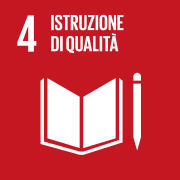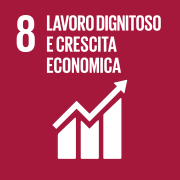
Sometimes science clashes with fraudsters, sometimes even with entire religious sects. Here is the story of the first human cloning and how the affair has increased distrust in science and technology and hindered progress towards a more sustainable world
TV said it, newspapers wrote it: the first perfect copy of a human being has been created in a laboratory. No science fiction, no cinema: a flesh-and-blood human clone has been born. This is exactly the news that broke on 26 December 2002, when biochemist Brigitte Boisselier announced to the world the birth of ‘Eve,’ the first human clone. The timing was perfect: the launch took place between Christmas and New Year’s Eve, when everything from politics to football is on holiday and newsrooms are struggling to find news to fill the newspaper or the news. The statement, splashed across the front page, shook the entire planet. Unfortunately, as often happens, behind the media hype lies a much more complex and… rather questionable story. But before going into the details of the Boisselier affair, let us take a step back and retrace the path of cloning, from the first experiments on animals to the world’s most famous sheep.
The origins of cloning: mice, frogs and sheep
Cloning is a concept rooted in the human desire to replicate life. But it is no walk in the park. The term ‘cloning’ refers to the creation of a living being genetically identical to another, obtained through cell manipulation techniques. Identical in genetic make-up and entire body.
Entire research centres and large funders began exploring cloning as early as the 1950s, starting with simple organisms such as frogs and mice.
One of the first significant breakthroughs in animal cloning was achieved in 1952, when Robert Briggs and Thomas King succeeded in cloning a frog by transferring the nucleus of an embryonic cell into an unfertilised egg cell. This experiment demonstrated that it was possible to create a clone, although it was not yet clear how replicable the technique was in more complex organisms.
The real breakthrough came decades later, in 1996, with the birth of Dolly the sheep. Researchers at the Roslin Institute in Scotland, led by Ian Wilmut, succeeded in cloning a mammal for the first time using a technique called ‘somatic cell nuclear transfer’. Dolly was not only a scientific success, but also a media sensation. Wilmut was immediately dubbed ‘the father of Dolly the sheep’ and featured on major television channels.
The world was fascinated by the idea that a sheep could be ‘copied and pasted’ with genetic precision. However, Dolly was not without problems: she developed diseases related to premature ageing and died at only six years old, fuelling the bioethical controversy over cloning.
Cloning: scientific progress and ethical risks
Cloning, especially of mammals like Dolly, is not just a matter of technique or scientific success. Every advance in the field of cloning has brought with it a heated debate on bioethical issues. On the one hand, the possibility of cloning complex organisms has fired the imagination of researchers and opened up new frontiers in medicine, such as the production of custom-made organs for transplantation. On the other hand, it has raised deep concerns about the manipulation of life.
One of the main fears concerns the safety and well-being of cloned living beings. Indeed, cloning has a high failure rate: most cloned embryos do not survive, and those that are born often have health problems. Dolly, for example, developed a form of early arthritis and lung disease typical of a much older animal. This raises the question: to what extent is it right to experiment on living beings for the advancement of science?
Moreover, human cloning raises even more complex ethical questions. If cloning a human being were possible and safe, what would it mean for personal identity? Would a clone be an autonomous person with its own rights, or a kind of living copy, devoid of uniqueness? A kind of spare part to be used at will when something fails in the original individual and a part needs to be replaced? And who would have the right to decide who can be cloned and for what purpose?
These ethical dilemmas represent a battleground in which scientific progress clashes with the need to establish moral limits. Science has the potential to radically transform our understanding of life, but each step forward requires deep reflection on the risks and responsibilities involved.
But science, as always, does not stand still. And it was in this context that Brigitte Boisselier entered the scene, with her incredible (literally…) statement.
Brigitte Boisselier: Eve, the first human clone, is born
As we were saying, the day after Christmas 2002, Brigitte Boisselier, a rather enigmatic French scientist, made an announcement that left the world open-mouthed: her company, Clonaid, had created the first human clone, a little girl called ‘Eve’.
Clonaid was the human cloning society founded by the Raelian sect, a religious group that believes, among other things, that life on Earth was created by a race of extraterrestrials called Elohim. But back to Eve.
“Eve was born at 11.55 a.m. by caesarean section. She weighs three kilos. She’s fine,’ Brigitte announced at the press conference, which was held not in the premises of a prestigious academy, let alone in the Clonaid research centre ‘which is in a secret location’, but in … Hollywood.
There, Boisselier declared that he had cloned Eve using techniques similar to those used to clone Dolly ‘but adapted to the human race’. The announcement was a real media earthquake: newspapers, TV and talk shows all over the world rushed to cover the news – perhaps due in part to the fact that the smartest science journalists were on holiday away from their editorial offices – while the public oscillated between amazement and enthusiasm. It was like being in an episode of ‘Black Mirror’; and reality was even stranger than fiction.
But the press conference was not over, and it was heading towards a conclusion that has entered science fiction in its own right: “After Eve, four more human clones are on the way thanks to the work of Clonaid scientists. The first will be born at the beginning of January in Northern Europe and will have two mothers: it has in fact been cloned in a lesbian couple.” Boisselier went on to close, to great effect: ‘Society changes, the world changes. It is every parent’s right to choose the child they want, even if they have no infertility problems.” Curtain.
But who was Brigitte Boisselier really? A visionary scientist or a con artist seeking notoriety? Before joining the Raelians, Boisselier was a respected chemist with a doctorate in biochemistry. But her meeting with Claude Vorilhon, aka Rael, a failed sports journalist and later founder of the Raelian movement, radically changed her life. Vorilhon convinced Boisselier to join his sect and she quickly became one of his most trusted disciples. It was Rael who prompted her to found Clonaid, with the stated aim of cloning human beings to ensure immortality.
Yes, but who are the Raelians?
To understand the history of Boisselier, it is necessary to know the Raelians a little better. This religious movement, founded in the 1970s by Rael, has over fifty-five thousand followers. They are distinguished by a somewhat confused symbolism (their religious emblem is a swastika embedded in a Star of David) and are convinced that – just 25,000 years ago – all life on Earth was genetically created by a race of aliens, called Elohim. Since they had the recipe available, they gladly passed it on to Brigitte for her experiments. Furthermore, according to the Raelians, humanity must prepare for a future in which the Elohim will return to judge their ‘children’. And what better way to prepare for this event than by cloning other human beings?
The Raelian movement, like many sects, attracts people in search of answers, offering them a sense of belonging and the promise of a better (in this case, intergalactic) future. However, like all sects, the risk for its adherents is high. The sects, in fact, exercise psychological and social control over their members, first by isolating them from their loved ones and the rest of the world and then by imposing on them more or less bizarre beliefs and progressively more grotesque behaviour that goes against science, but also against simple logic.
Boisselier, apparently seduced by Rael’s ideas, set to work on the ambitious human cloning project until, less than a year later, Eve was born. But despite the sensational announcement, there was one small but crucial detail missing: proof.
The reaction of the scientific community: “Out with the evidence!”
Not surprisingly, the scientific community greeted Boisselier’s announcement with scepticism. As the media continued to revive the news, specialists clamoured to see the evidence. After all, science is based on verifiable and replicable evidence: an extraordinary claim like Boisselier’s required extraordinary evidence.
As we know, the scientific method is based on falsifiability: any discovery or invention must be able to be tested and potentially refuted. During the peer review process, reviewers try to falsify a theory or the results of an experiment to check its soundness. If they fail, the finding takes on scientific value. But in Boisselier’s case, the proof … never came.
When the scientific community asked Boisselier to provide DNA samples of Eve and the ‘mother’ from whom she had been cloned for independent analysis, she flatly refused, stating that she had to protect the privacy of the child and her parents.
Another source of suspicion was the method’s extraordinary effectiveness: according to Clonaid, in just one year and 10 attempts, as many as five had resulted in the birth of a clone. A 50% success rate, not comparable to the more than 200 failed attempts by Wilmut’s team before achieving the birth of Dolly the sheep.
Without evidence, Boisselier’s claims remained nothing more than words. Scientists began to increasingly doubt the veracity of the announcement, and soon the news deflated, leaving behind only a trail of scepticism and disappointment.
Science meets sensationalism
The story of Brigitte Boisselier and Clonaid is a striking example of how sensationalism can distort the perception of science. The media, hungry for extraordinary news, relaunched the announcement without asking too many questions, while the scientific community, more cautious, tried to put the discourse back on more solid and verifiable ground.
Unfortunately, deluded or unscrupulous people often try to deceive the scientific community to gain fame or money, severely damaging the credibility of science itself. When the public loses trust in scientists, it becomes more difficult to promote evidence-based policies such as those needed to tackle global challenges like combating climate change or improving life and health for all.
















